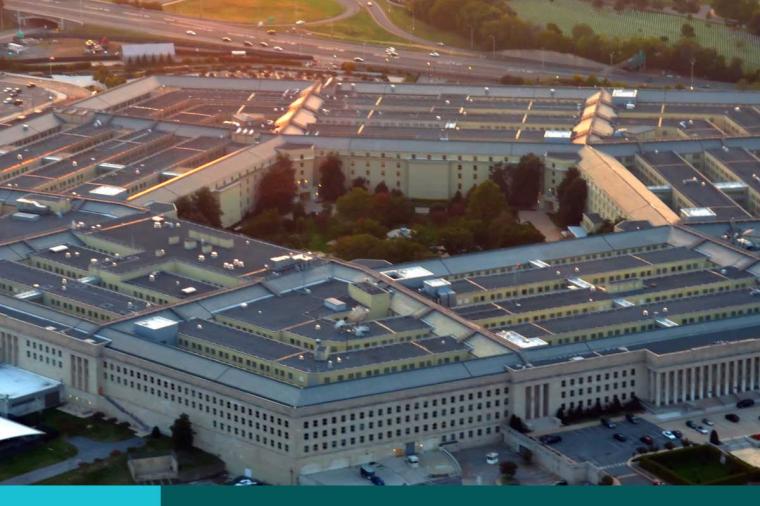The Latest on DISA’s Strategic Direction

The US military information network comprises over 15,000 classified and unclassified networks facilitating information exchange for service members worldwide. Known as the Department of Defense Network (DoDIN), it includes devices such as computers, mobile phones, weapons, servers, and data systems consistently serving military personnel at all levels. Data sharing across these devices has been under frequent threats of cyberattacks by adversaries and necessitates keen vigilance by the Defense Information System Agency (DISA) to manage risks and vulnerabilities. With the ever-evolving technologies, maintaining effectiveness and network safety is a formidable challenge to DISA. In combat environments, cybersecurity is critical for the US to ensure its lethality in warfighting. The leaders at DISA and other DoD agencies have recently explored the impact of emerging technologies on the DoD and what can be expected in the next five years and beyond regarding its IT mission.
Current Challenges and Opportunities
What is clear to DISA is the need to stay focused on emerging threats and the advancement of technology to address the mission demands. DISA identified several challenging areas that require ideas and solutions to meet these demands. One such challenge is to bolster the DoD data traffic with enhanced cybersecurity, secure communication, and enhanced data center capabilities. DISA is exploring a blend of innovative technologies like Low Earth Orbit (LEO) satellite services and cloud services to create “data centers in the sky.” This effectively extends DISA’s operational reach and transitions away from the conventional on-premises data management systems. This also signifies a greater shift towards as-a-service models through industry, aiming to simplify rapidly evolving technology adoption, especially AI, and management for the DISA. The interoperability of the DoD’s IT infrastructure is one of DISA’s key focuses, and it continues to present challenges to the agency. DISA stresses the importance of adopting open standards as a strategy to achieve seamless integration across various platforms.
Among these challenges, DISA recognizes the importance of the user experience (UX) in the success of technology adoption. The agency plans to focus on user experience to understand their pain points and ensure that difficulties in utilizing technologies are addressed. Lastly, successful adoption of technology is contingent on the capabilities of the DoD workforce, and DISA plans to invest in the training and education of its workforce to ensure emerging technologies are effectively utilized to maintain operational efficiency and ethical standards.
Underscoring the need to succeed in adopting and advancing technologies across the DoD, the agency recently formed a team to augment the Chief Technology Office to implement its IT advancement strategy known as Fulcrum. Its objectives, at the forefront, includes the user experience and specific guidelines to help the decision-makers track their progress in IT-related implementation efforts. The strategy stresses the significance of having a skilled and well-prepared cyber workforce, robust technological and data infrastructures, and the importance of user experience in the design and execution of IT systems.&
Offering Solutions
IT companies play a pivotal role in providing technology solutions to government agencies such as DISA and DoD; their challenges and mission offer clear strategic sales opportunities for IT alignment and adoption. Here are key considerations:
- Infrastructure modernization and data security: Solutions call for products and services that enhance network connectivity including speed, reliability, and security compliance will be critical.
- Adaptable IT systems: Emerging technologies will be attractive to the DoD, especially those that contain agile cybersecurity technologies and services that support rapid integration and deployment.
- User experience: Solutions that focus on improving user interaction, satisfaction, and system reliability continue to be a high priority for the DoD.
- Workforce development: IT companies offering continuous learning, certifications, cyber training, and educational resources that align with DoD’s objectives and technologies will be well-received.
- Interoperability and integration: Emphasize the ease of integration for your solutions with the agency’s existing systems. Demonstrate how your products can seamlessly interact across platforms that can facilitate data sharing and communication with other military units.
- Future direction: The DoD wants to leverage emerging technologies and maintain an edge over adversaries, particularly cybersecurity. Companies that can demonstrate strong alignment with the DoD’s Fulcrum Strategy with innovation and technological advancements will be highly sought after.
Understanding DISA’s strategic priorities in leveraging technologies and protecting its complex web of networks for the DoD is critical and can guide IT companies in developing targeted solutions to meet their needs. Government agencies are eager to partner with industry to solve problems and advance their missions. You will stand out among your competitors when you can provide products and services that address the considerations above and craft messages that resonate with DISA’s operational realities and strategic direction.
To get more TD SYNNEX Public Sector Market Insight content, please visit our Market Intelligence microsite.
About the Author:
Toan Le is focused on providing insights on federal IT buying trends, with a particular focus on the Department of Defense and the Intelligence Community. Over the past years, his work ethic, diverse skill sets, and professional experience in research, analytics, information technology, and public health have made a solid contribution across the public and private sectors. Toan earned his doctorate from the Johns Hopkins University, Bloomberg School of Public Health.


















